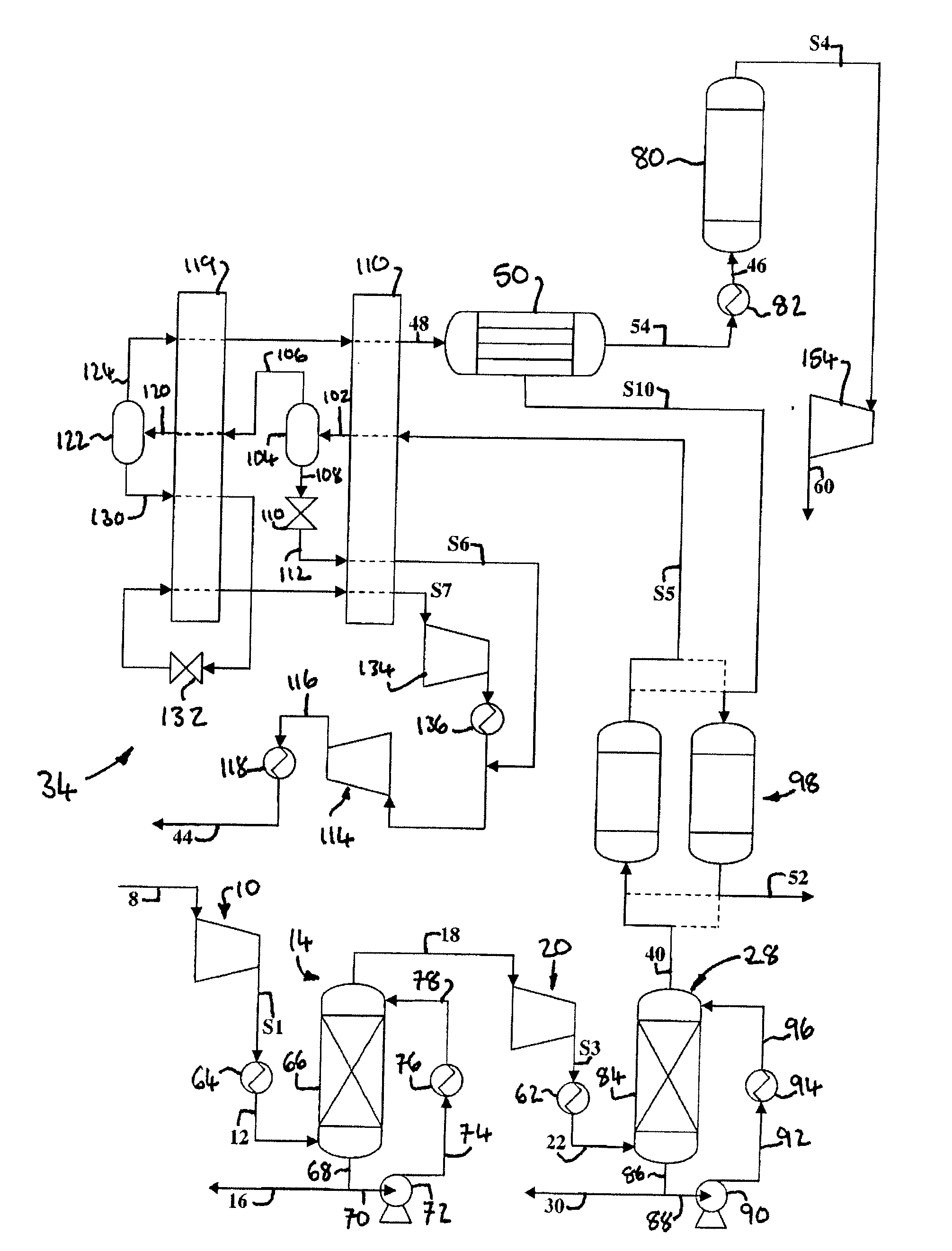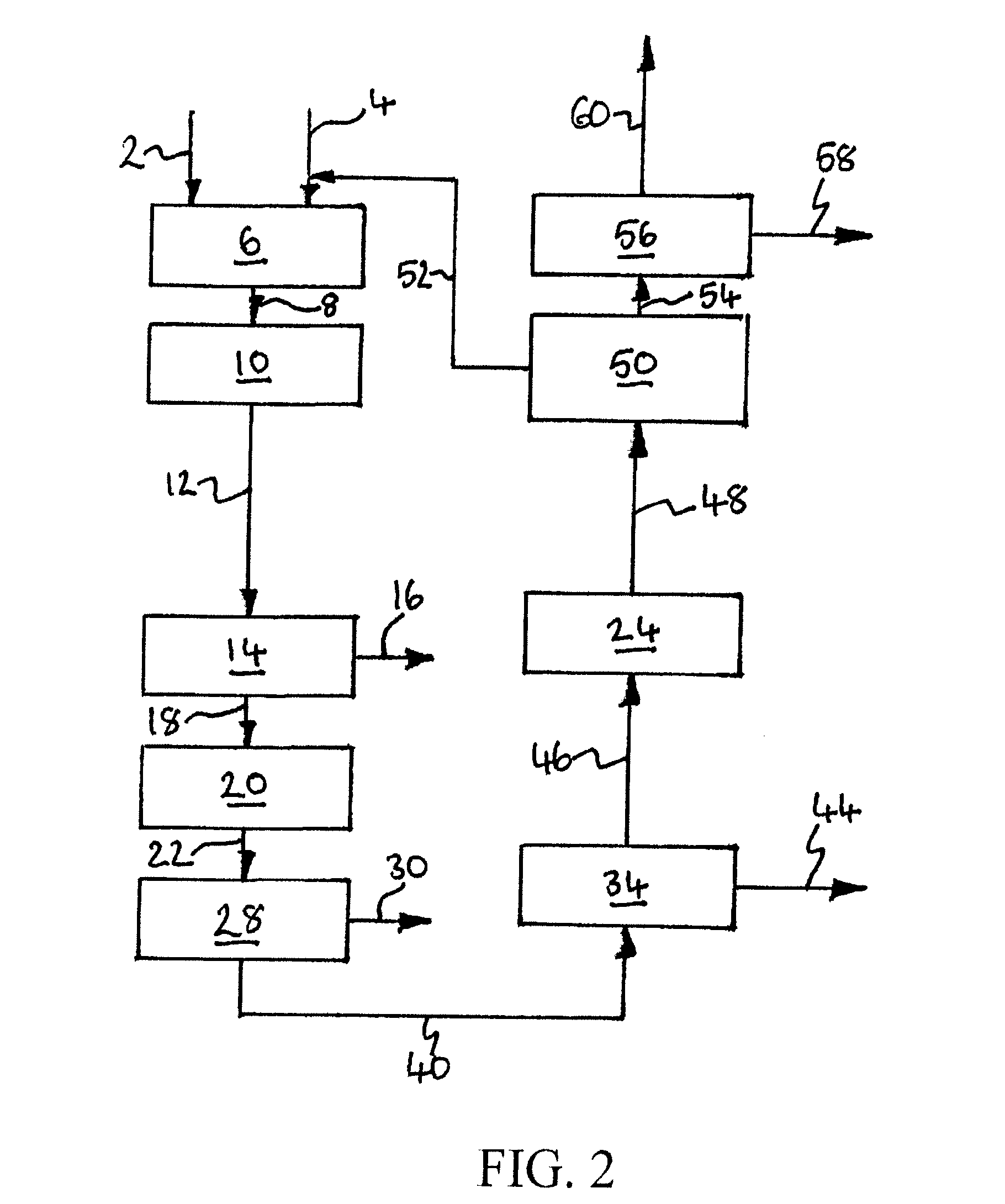Treatment of Flue Gas From an Oxyfuel Combustion Process
a technology of oxyfuel and flue gas, which is applied in the direction of liquefaction, hydrogen sulfide, and combustion gas purification/modification, etc., can solve the problem of high combustion temperature, which is not practical in a furnace or boiler
- Summary
- Abstract
- Description
- Claims
- Application Information
AI Technical Summary
Benefits of technology
Problems solved by technology
Method used
Image
Examples
example
[0230]Computer simulations using the APSEN™ Plus software (version 2006.5; © Aspen Technology, Inc.) have been carried out in respect of the embodiments depicted in FIGS. 3 to 5. For each embodiment, a first simulation has been carried out on the basis that there is sufficient catalyst in the catalyst bed(s) to achieve 90% CO conversion, and a second simulation has been carried out on the basis that there is no catalyst in the bed(s). The results of the simulations are presented in the following heat and mass balance tables.
TABLE 2Embodiment of FIG. 3 (with catalyst)Stream—8121618222630323638PressureBar1.0115.0015.0015.0030.0030.0030.0030.00120.002.00(MPa)(0.1)(1.5)(1.5)(1.5)(3)(3)(3)(3)(12)(0.2)Temperature° C.30.0930.0065.0065.00160.0030.0034.1540.0030.0026.67Flow Ratekg / s150.6150.66.8143.8143.8143.81.4142.5107.734.6Armol %2.7112.7110.0052.8672.8672.8710.0022.9180.4558.906CO2mol %70.51870.5183.15474.48474.48474.7590.76175.97196.66226.714N2mol %15.75115.7510.01316.65716.65716.6760.0...
PUM
| Property | Measurement | Unit |
|---|---|---|
| temperature | aaaaa | aaaaa |
| pressure | aaaaa | aaaaa |
| temperature | aaaaa | aaaaa |
Abstract
Description
Claims
Application Information
 Login to View More
Login to View More - R&D
- Intellectual Property
- Life Sciences
- Materials
- Tech Scout
- Unparalleled Data Quality
- Higher Quality Content
- 60% Fewer Hallucinations
Browse by: Latest US Patents, China's latest patents, Technical Efficacy Thesaurus, Application Domain, Technology Topic, Popular Technical Reports.
© 2025 PatSnap. All rights reserved.Legal|Privacy policy|Modern Slavery Act Transparency Statement|Sitemap|About US| Contact US: help@patsnap.com



